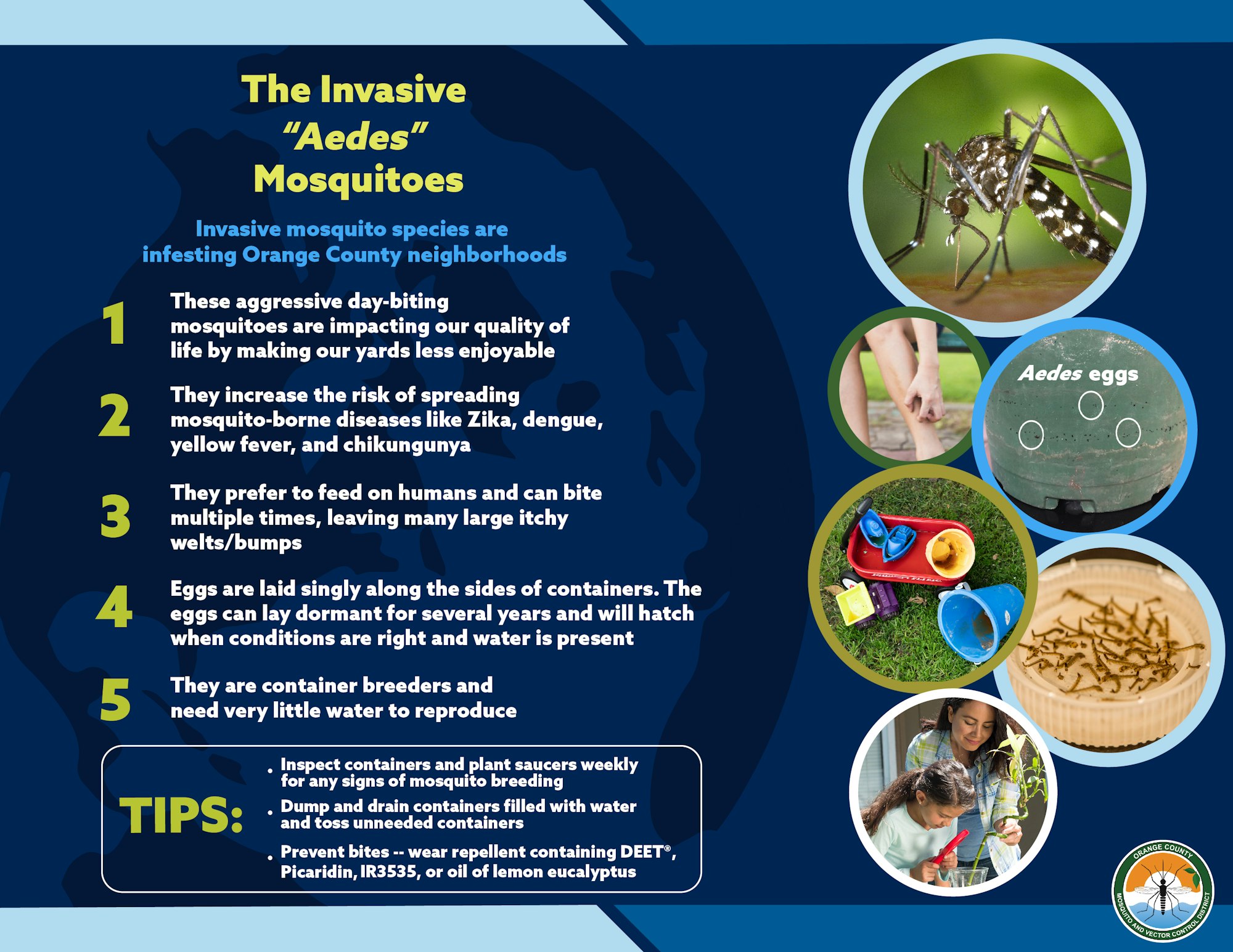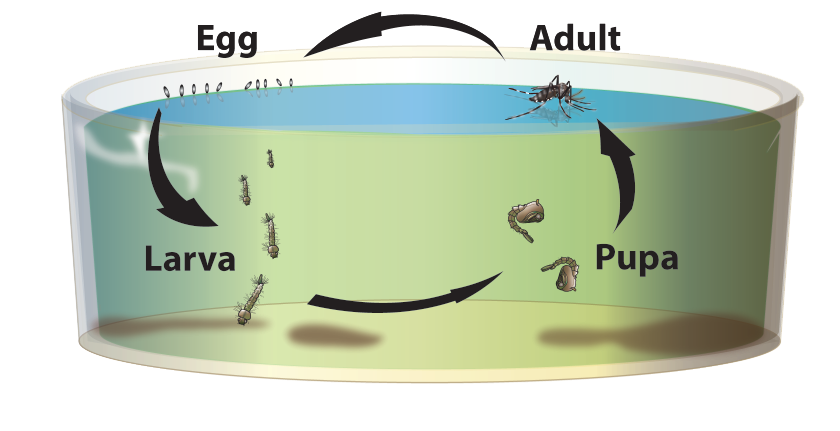Aedes Mosquitoes

Mosquito control is a shared responsibility. To prevent resident must redouble their efforts to eliminate ALL standing water from their property, including standing water found indoors. Residents must take responsibility for their own yards.
Are your raising mosquitoes?What to look for:
- Small, black mosquitoes with white stripes
- Mosquitoes that are active and bite during the day — even indoors!
- Immature mosquitoes (larvae and pupae) swimming in stagnant water.
What you need to know:
- Invasive mosquitoes must acquire the virus from an infected human. Example: Infected traveler returning from an area with active transmission of Zika.
- The California Department of Public Health acknowledges that the risk of transmission of Zika virus in California is low. Factors contributing to our lowered risk are the use of window screens, air conditioning, and comprehensive mosquito control and education programs.
- There is no cure for Zika. Mosquito breeding source elimination and bite prevention is the only way to prevent the spread of this virus.

Mosquito Life Cycle
The invasive, black-and-white mosquitoes can lay their eggs individually along the waterline of any container. This reduces the effectiveness of “dump and drain!”
These mosquitoes can live and complete their life cycle either indoors or outdoors. Eggs are laid along the waterline of any water-holding container such as flower vases, plant saucers, buckets, used tires, and even plants that hold water like bamboo or bromeliads. Eggs can remain alive for years, and hatch into larvae when conditions are right.
For more information on the Aedes mosquito please click on one of the links below
For English/Spanish/Vietnamese, click hereFor English/Korean/Mandarin, click hereFAQ_Aedes.pdf

.png?ixlib=rb-1.1.0&or=0&w=720&h=720&fit=max&auto=format%2Ccompress&s=a1bf0fdd49f4e385dd5483ca83e30e59)


